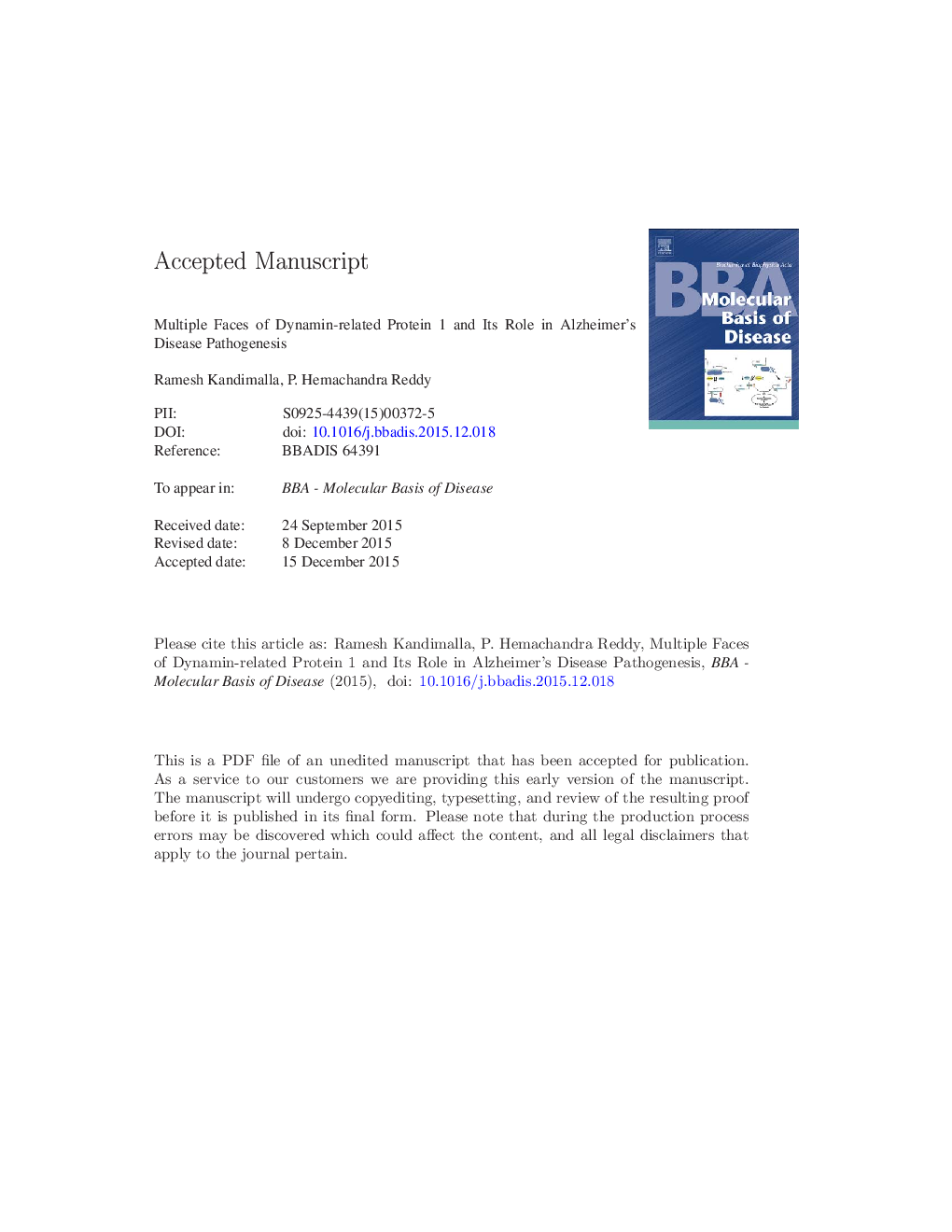| Article ID | Journal | Published Year | Pages | File Type |
|---|---|---|---|---|
| 8259426 | Biochimica et Biophysica Acta (BBA) - Molecular Basis of Disease | 2016 | 51 Pages |
Abstract
Mitochondria play a large role in neuronal function by constantly providing energy, particularly at synapses. Recent studies suggest that amyloid beta (Aβ) and phosphorylated tau interact with the mitochondrial fission protein, dynamin-related protein 1 (Drp1), causing excessive fragmentation of mitochondria and leading to abnormal mitochondrial dynamics and synaptic degeneration in Alzheimer's disease (AD) neurons. Recent research also revealed Aβ-induced and phosphorylated tau-induced changes in mitochondria, particularly affecting mitochondrial shape, size, distribution and axonal transport in AD neurons. These changes affect mitochondrial health and, in turn, could affect synaptic function and neuronal damage and ultimately leading to memory loss and cognitive impairment in patients with AD. This article highlights recent findings in the role of Drp1 in AD pathogenesis. This article also highlights Drp1 and its relationships to glycogen synthase kinase 3, cyclin-dependent kinase 5, p53, and microRNAs in AD pathogenesis.
Keywords
Cyclophilin DGap43NMDARAβPPGSK3βDrp1TFAMBcl2PSD95NRF1dynamin-related protein1Fis1Mfn1N2aGTPasep53CypDPostsynaptic density 95MFFSMACTOMM40DIABLOBcl2 associated X proteinUbc9Ubiquitin-conjugating enzyme 9PGC1Dnm1direct IAP-binding protein with low pImitochondrial division inhibitor 1MiD51PS1pKaAβCA1GEDAMPARNrf2CPTPP2AADDLsIMScdk5APPMitochondrial DNAopa1Mdm2p53 upregulated modulator of apoptosispresenilin 1Small interfering RNAsiRNAα-amino-3-hydroxy-5-methyl-4-isoxazolepropionic acid receptorβ-Amyloidoptic atrophy 1Adenosine TriphosphateATPcornu ammonis area 1mild cognitive impairmentamyotropic lateral sclerosisBaxAlzheimer's diseaseALSHuntington's diseaseParkinson's diseaseAPPsweTerminal deoxynucleotidyl transferase dUTP nick end labelingTUNELsecond mitochondria-derived activator of caspasesDynamin 1mtDNAmicro ribonucleic acidelectron transport chainhuman neuroblastoma cellsCo-IPNuclear respiratory factor 1nuclear respiratory factor 2mitochondrial transcription factor Amitochondrial fission factorPhosphatase 2AMouse double minute 2MitochondriaMiRNACo-ImmunoprecipitationMCIETcperoxisome proliferator-activated receptor gamma coactivator 1mitochondrial fission 1 proteinamyloid precursor proteinamyloid beta precursor proteinprotein kinase ABAKPUMAcyclin dependent kinase 5N-methyl-d-aspartate receptor
Related Topics
Life Sciences
Biochemistry, Genetics and Molecular Biology
Ageing
Authors
Ramesh Kandimalla, P. Hemachandra Reddy,
